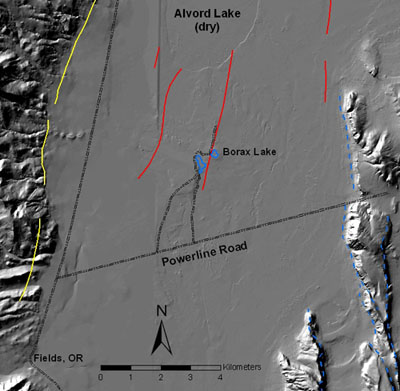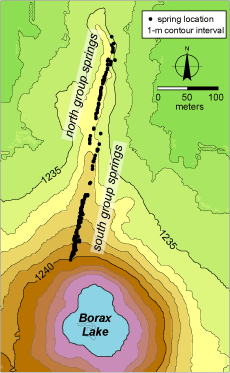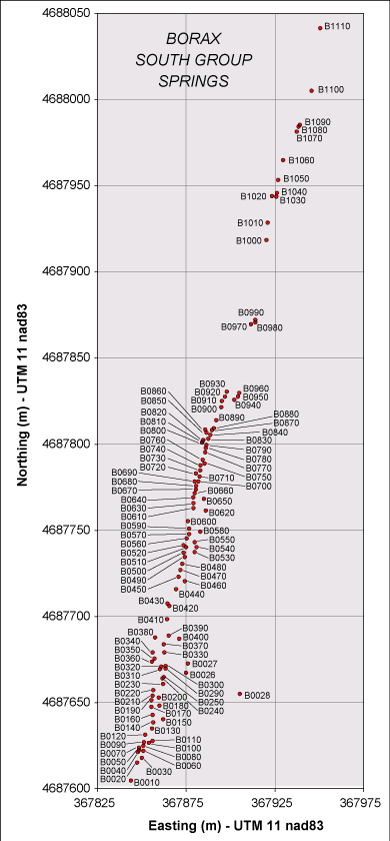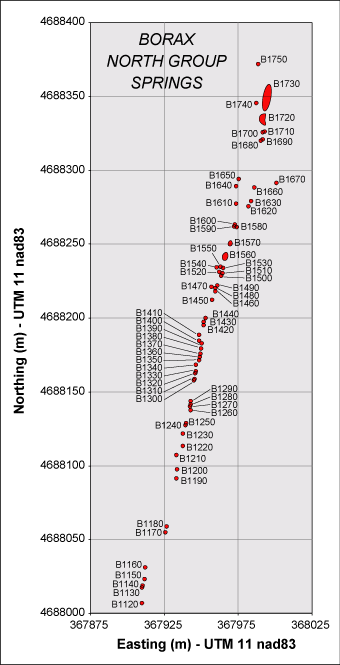Borax Lake is a geothermal area located in the northern Pueblo Valley
(southern Alvord Basin). The lake lies along an intrabasin fault, and approximately 180 smaller geothermal vents extend
roughly 1 km north of the lake along the fault (see map below). While Borax Lake is a relatively cool 31°C (owing to its large size),
temperatures in the springs north of Borax Lake range from about 20°C to 95°C (averaging ~65°C).
 Hillshade map of southern Alvord Basin showing location of Borax Lake and Quaternary faults (red - active during Holocene; yellow - active middle to late Quaternary; blue dashes - possibly active during Quaternary). Fault data from Walker and McLeod, 1991.
Hillshade map of southern Alvord Basin showing location of Borax Lake and Quaternary faults (red - active during Holocene; yellow - active middle to late Quaternary; blue dashes - possibly active during Quaternary). Fault data from Walker and McLeod, 1991. |
|
Approximately 180 individual vents have been mapped near Borax Lake, and their positions clearly define the fault trace. A break, or step-over region, is apparent when observing a map of spring locations (see below). We identify springs as belonging to either the "North Group" or the "South Group" based on their relative position to the step-over region.
To learn more about the datasets collected for the Borax Lake area, select from the following:
Spring numbering convention is provided on the maps below.
Springs are identified in order from south to north.
For labelling purposes, the South Group and North Group springs have been separated. |
 Shaded relief map of Borax Lake and hot springs. Contour interval = 1 m.
Shaded relief map of Borax Lake and hot springs. Contour interval = 1 m.
|
The plots above and to the left show the numbering scheme used to identify Borax Hot Springs.
Springs are identified in order from south (first spring: B0010) to north (last spring: B1750).
For labelling purposes, the South Group and North Group springs have been separated. |




